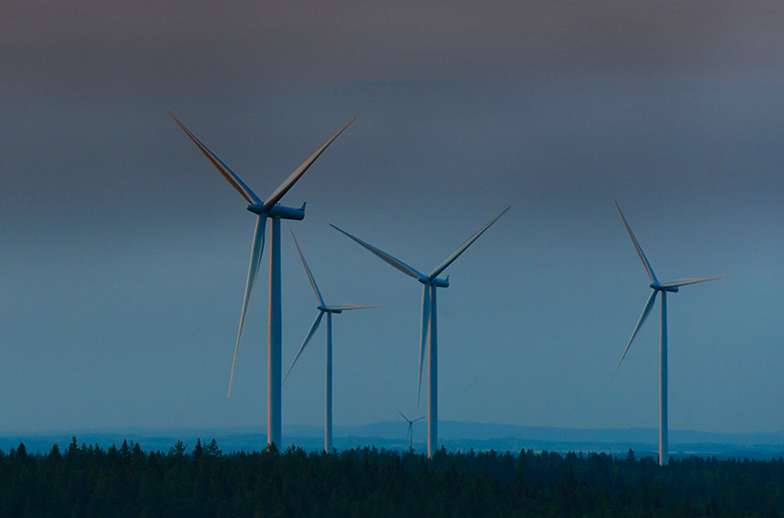
Stockholm Data Parks recently had the opportunity to speak about PPAs with Charlotte Unger Larson at the Swedish Wind Energy Association and Paul Stormoen from wind farm developer OX2.
Wind power in Sweden took a surprising step in the second quarter of 2017, with 232 MW of wind power being committed for new projects. In recent years, Sweden has seen growing interest in traditional and renewable PPAs with large corporations such as Google and IKEA driving development of capacity and business models.
Charlotte and Paul, what is a Power Purchasing Agreement (PPA)?
– It’s an agreement between a buyer and a producer of electricity. These contracts are outside Nordpool, the standard market for electricity in the Nordic region. They are typically used for large contracts over longer time periods: anything from seven to 20 years. For these types of time frames, it is difficult to secure predictable prices on the standard market. PPAs can be based on any type of energy source, but their recent surge in popularity has been driven by renewables and primarily wind power.
Different companies have different reasons for concluding PPAs. All companies engaging in a PPA want to get a predictable price over a longer time period than what is typically available on Nordpool. Some companies, like Google and IKEA, are also focused on sustainability and want to ensure that their consumption is matched by additional renewable capacity in the system.
In the build out of renewable wind power, the data center industry, notably Google, has been playing a key role. Since 2012, Google has contracted around 450 MW of renewable wind PPAs in Sweden. In energy terms, that corresponds to close to 1% of Sweden’s total electricity consumption.
How are PPAs connected to Sweden’s system to promote renewable energy?
– In Sweden, new renewable energy production is promoted through a market-based mechanism where producers of renewable energy receive a tradeable certificate for every MWh they produce. Electricity consumers are required to purchase such certificates in proportion to their usage. Price is determined by demand and supply on SKM (Svensk Kraftmäkling), an independent marketplace. By regulating the amount of certificates that consumers need to acquire, the Swedish Parliament influences the price and, thus, the subsidy to renewable energy.
The current scheme aims to make some 28.4 TWh of renewable energy available to 2020, most of which will be wind power, including capacity in Norway. Counting on-going wind projects, this objective has already been reached, corresponding to a capacity of around 9 GW. For 2030, the ambition is that the system should generate an additional 18 TWh.
The increase of renewable PPAs tend to accelerate the build out of wind energy, leveraging the tradeable certificates as part of the PPAs. PPAs reduce the risk for the parties involved and, thus, lower the threshold for a positive investment decision.
Paul, how are PPAs structured?
– Over the past year, the structure of PPAs has developed significantly. They have become longer and involve more parties to handle different types of risks. OX2 acts as a combination of broker and producer. We bring all parties to the table and match demand, financing, finance structure and ownership, and ensure construction as well as operation and maintenance. Typical ownership would be a pension fund with the support of bank loans in what could be a 50/50 mix.
To handle the intermittency of renewable energy, the deals most often require a third-party energy provider of some sort, with responsibility to ensure the energy balance when there is insufficient wind to fulfill delivery obligations.
In these deals, demand and price are fixed, and contract terms will determine how price risk is divided between the producer and the balancing party. To get an idea of price, the Nordpool forward market gives an indication, even though the timeframe and volume traded on Nordpool is shorter and lower, respectively.
Note from Stockholm Data Parks: prices are confidential, but considering Nordpool forward prices and current fierce competition, it can be assumed that long-term PPAs come in below EUR 30/MWh.
Sometimes, even an insurance company can become involved to handle counterparty risk, in case a consumer or producer would be unable to fulfil their obligations over a contract period.
For a customer who wants to ensure renewable energy for all volumes under the PPA, deals can be complemented with Guarantees of Origin for all electrical power that originates from other sources than wind.
Charlotte and Paul, in conclusion, what should we expect for wind and PPAs in the future?
– Now that the new framework for reaching an additional 18 TWh of renewable energy has been agreed, we are set for a continued expansion of wind power in Sweden, as evidenced by the strong figures for the second quarter. With the energy transformation going on in Europe and global warming looming, predicting energy prices for the future will remain a challenge. With that background, and wind power production costs expected to continue to decrease, it is likely that renewable PPAs will increase in significance in the years ahead.